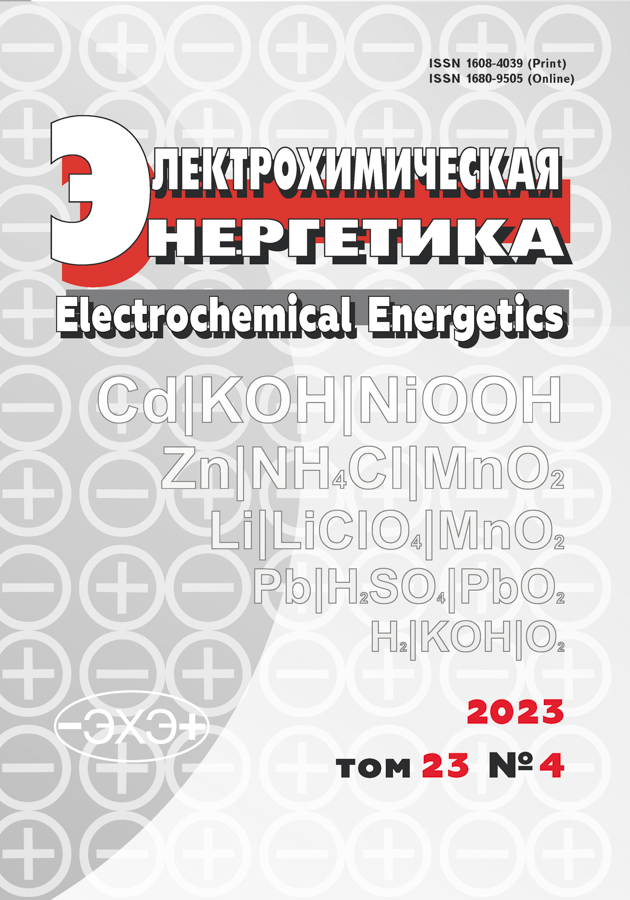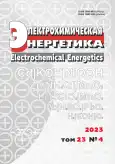Electrochemical Energetics
The journal "Electrochemical Energetics" (Elektrokhimicheskaya Energetica) is a scientific periodical dedicated to the most dynamic branch of applied electrochemistry - chemical power sources.
ISSN 1608-4039 (print) ISSN 1680-9505 (online)
Frequency - 4 issues per year. Publication languages are Russian and English.
The publisher of the journal is Saratov State University, Saratov, Russia.
The founders of the magazine are
Saratov State University, Saratov, Russia https://www.sgu.ru
National Research University "Moscow Power Engineering Institute", Moscow https://mpei.ru
National Association of Manufacturers of Current Sources "RUSBAT", Moscow http://www.rusbat.com
The mass media registration certificate: PI No 77-15569 of 20 May, 2003. It was re-registered by the Federal Service for Supervision in the Sphere of Mass Communications and Protection of Cultural Heritage due to the change in founders—Certificate PI No FS77-30820 of December 27, 2007.
Subscription index of publication 20844 in the United Catalog "Press of Russia", section 30 "Scientific and technical publications. Proceedings of the RAS. University News ".
Subscription online in the online catalog “Subscription Press” http://www.akc.ru.
Aims and Scope
The aim of the journal is to highlight the results of research in the field of developing new and improving traditional electrochemical systems for chemical current sources.
The journal’s objectives are
- publication of original scientific papers, surveys, reviews, reports;
- coverage of the situation in the power sources industry (primary cells, batteries and electrochemical capacitors, fuel cells);
- developing research and pilot-plans in the field of power sources in Russia and abroad;
- information on the operation of enterprises, institutes, laboratories and departments;
- information on conferences and meetings, exhibitions and training.
Research Areas of Elektrokhimicheskaya Energetica (Electrochemical Energetics):
1. Fundamental problems of energy conversion in lithium electrochemical systems;
2. Fundamental problems of the improvement of traditional electrochemical systems (lead-acid, nickel-cadmium, nickel-metal hydride);
3. Electrochemical capacitors;
4. Fuel cells and power installations on their basis;
5. Physicochemical problems of electrolytes and electrolyte systems (solid, non-aqueous, polymeric, and gel-like ones);
6. Scientific basis of modern technologies of production of chemical power sources; new materials, including composite and nano-scale ones.
7. Scientific bases of processing and recycling of chemical power sources.
02.00.04 - Physical chemistry (chemical sciences),
02.00.05 - Electrochemistry (chemical sciences),
05.17.03 - Technology of electrochemical processes and corrosion protection (chemical sciences),
05.17.03 - Technology of electrochemical processes and corrosion protection (technical sciences)
Publications are free of charge.
The electronic version of the journal is Open Access.
The content is published under the terms of the Creative Commons Attribution 4.0 International License (CC-BY 4.0).
Current Issue
Vol 23, No 4 (2023)
Articles
Search for low-melting functional electrolytes in a four-component reciprocal system Na⁺, Rb⁺, Cs⁺ || F⁻, NO₃⁻
Abstract
 167-187
167-187


NiO/C-based anodes for lithium-ion current sources
Abstract
 188-196
188-196


Physical and chemical properties of lithium perchlorate and tetrafluoroborate solutions in the mixture of sulpholane and sulfurous anhydride
Abstract
 197-206
197-206


On the influence of the carbon material surface fraction determined by porosity on the linearity of the charge-discharge characteristics of DLSC
Abstract
 207-216
207-216












